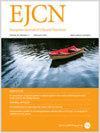Insulin resistance and beta-cell dysfunction in adults with different patterns of diet: a cross-sectional study in north-western Tanzania
IF 3.6
3区 医学
Q2 NUTRITION & DIETETICS
引用次数: 0
Abstract
The diabetes burden in sub-Saharan Africa is rising, but there is little African data on associations between diet, insulin resistance, and beta-cell dysfunction. We investigated the association between dietary patterns and insulin resistance and beta-cell dysfunction among adults in Mwanza, Tanzania. In a cross-sectional study involving adults with or without HIV, insulin resistance and beta-cell dysfunction were calculated from plasma insulin and glucose measures during an oral glucose tolerance test. Diet data were collected using a validated food frequency questionnaire and dietary patterns were derived by principal component analysis and reduced rank regression. Logistic regression analysis was used to assess the association between exposure variables (dietary patterns terciles) with outcome variables (insulin resistance and beta-cell dysfunction), adjusting for HIV status, age, sex, body mass index, alcohol consumption, and smoking. Of 462 participants, the mean age was 42 (±12) years, 58% were females, and 60% were HIV-infected. Carbohydrate-dense patterns were associated with more insulin resistance by HOMA-IR (aOR 2.7, 95% CI 1.5; 4.8) and Matsuda index (aOR 3.7, 95% CI 2.0; 6.7), but not with either HOMA-β, insulinogenic index or oral disposition index. The level of adherence to either the vegetable-rich or vegetable-poor pattern was not associated with any of the markers of insulin resistance or beta-cell dysfunction. HIV infection did not affect the association between patterns of diet and glucose metabolism outcomes. The lack of association between either vegetable-rich or vegetable-poor patterns with insulin resistance or beta cell dysfunction requires further research.

不同饮食模式成年人的胰岛素抵抗和β细胞功能障碍:坦桑尼亚西北部的一项横断面研究。
背景:撒哈拉以南非洲地区的糖尿病发病率正在上升,但有关饮食、胰岛素抵抗和β细胞功能障碍之间关系的非洲数据却很少:我们调查了坦桑尼亚姆万扎成年人的饮食模式与胰岛素抵抗和β细胞功能障碍之间的关系:在一项横断面研究中,根据口服葡萄糖耐量试验中的血浆胰岛素和葡萄糖测量值,计算出成人是否感染了艾滋病病毒,以及是否存在胰岛素抵抗和β细胞功能障碍。饮食数据通过有效的食物频率问卷收集,饮食模式通过主成分分析和秩回归得出。逻辑回归分析用于评估暴露变量(饮食模式三等分)与结果变量(胰岛素抵抗和β细胞功能障碍)之间的关系,并对艾滋病毒感染状况、年龄、性别、体重指数、饮酒量和吸烟进行了调整:在 462 名参与者中,平均年龄为 42 (±12) 岁,58% 为女性,60% 感染了艾滋病毒。根据 HOMA-IR (aOR 2.7, 95% CI 1.5; 4.8)和松田指数 (aOR 3.7, 95% CI 2.0; 6.7),碳水化合物密集型模式与胰岛素抵抗有关,但与 HOMA-β、胰岛素生成指数或口服处置指数无关。坚持多蔬菜或少蔬菜模式的水平与胰岛素抵抗或β细胞功能障碍的任何指标都没有关系。艾滋病病毒感染并不影响饮食模式与糖代谢结果之间的关联:富含蔬菜或缺乏蔬菜的饮食模式与胰岛素抵抗或β细胞功能障碍之间缺乏关联,这需要进一步研究。
本文章由计算机程序翻译,如有差异,请以英文原文为准。
求助全文
约1分钟内获得全文
求助全文
来源期刊
CiteScore
10.60
自引率
2.10%
发文量
189
审稿时长
3-6 weeks
期刊介绍:
The European Journal of Clinical Nutrition (EJCN) is an international, peer-reviewed journal covering all aspects of human and clinical nutrition. The journal welcomes original research, reviews, case reports and brief communications based on clinical, metabolic and epidemiological studies that describe methodologies, mechanisms, associations and benefits of nutritional interventions for clinical disease and health promotion.
Topics of interest include but are not limited to:
Nutrition and Health (including climate and ecological aspects)
Metabolism & Metabolomics
Genomics and personalized strategies in nutrition
Nutrition during the early life cycle
Health issues and nutrition in the elderly
Phenotyping in clinical nutrition
Nutrition in acute and chronic diseases
The double burden of ''malnutrition'': Under-nutrition and Obesity
Prevention of Non Communicable Diseases (NCD)

 求助内容:
求助内容: 应助结果提醒方式:
应助结果提醒方式:


